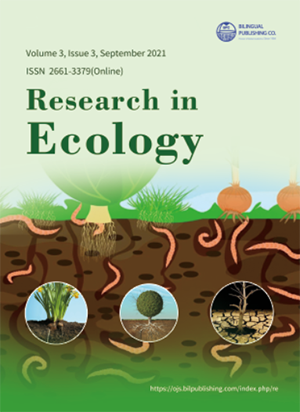
Assessment of Urban Greenery Status in Major Cities of Oromia, Ethiopia
DOI:
https://doi.org/10.30564/re.v3i3.3638Abstract
This work aims at studying different green spaces’ experiences in developed countries and extrapolates the experiences to Oromia cities in Ethiopia; in order to investigate and promote greenery infrastructure in selected cities. To do that greenery practice performance data were collected in four cities, which were classified into two groups as good and weak performers. As a result, Adama and Bishoftu cities were good urban greenery performers whereas Burayu and Sebeta were weak performers. The cities were also selected non-randomly to investigate the current urban greenery practice and different green areas in each city. Eight green areas were taken as samples for observation, where qualitative and quantitative data were collected from primary and secondary sources. The assessment of data confirmed that green areas along the roadside, recreational parks, open areas, and nursery sites existed in most cities. The urban plan of some cities does exclude most green area components. Greenery sites in Bishoftu and Adama are relatively better, while in Burayu and Sebeta urban greenery are highly abused for changing to another type of land use, e.g., residential and institutional areas. The technical skills of tree planting, care, protection, and management were also observed as a collective resource.
Keywords:
Urban greenery; Per-capita; Green space; Tree nursery; Urban planReferences
[1] J. Sandström, “Jensen , T . & Sandström, J. ( 2009 ), Global trafficking networks and business Umeå School of Business,” vol. 7, no. January, pp. 147- 159, 2015.
[2] M. Biazen Molla, “The Value of Urban Green Infrastructure and Its Environmental Response in Urban Ecosystem: A Literature Review,” Int. J. Environ. Sci., vol. 4, no. 2, pp. 89-101, 2015.
[3] L. Panel, E. Persons, and D. Agenda, “The Urban Opportunity to Enable Transforma6ve and Sustainable,” 2015.
[4] SDSN, “The Urban Opportunity: Enabling Transformative and Sustainable Development Background Paper for the,” pp. 1-47, 2013.
[5] R. D. Riley et al., “Prognosis Research Strategy (PROGRESS) 2: Prognostic Factor Research,” PLoS Med., vol. 10, no. 2, p. e1001380, 2013.
[6] M. B. Molla, “The Value of Urban Green Infrastructure and Its Environmental Response in Urban Ecosystem : A Literature Review Mikias Biazen Molla Hawassa University , Wondo Genet College of Forestry and Natural Resources, Department of Natural Resource,” Water.Ca.Gov, vol. 4, no. 2, pp. 89-101, 2015.
[7] J. Ahern, “Green infrastructure for cities: the spatial dimension,” Towar. Integr. Sustain. Water Landsc. Manag., pp. 267-283, 2007.
[8] J. Mitchell, “Policy and practice in the United Kingdom,” J. Consum. Stud. Home Econ., vol. 23, no. 2, pp. 129-142, 2003.
[9] S. Borelli, Y. Chen, M. Conigliaro, and F. Salbitano, “Green infrastructure : a new paradigm for developing cities,” World For. Congr. Conf. Pap., no. September, 2015.
[10] A. Coleman, “Environmental Psychology and Urban Green Space : Supporting Place-Based Conservation in Philadelphia , PA,” Master Environ. Stud. Capstone Proj., p. Paper 67, 2014.
[11] S. M. A. Haq, “Urban Green Spaces and an Integrative Approach to Sustainable Environment,” J. Environ. Prot. (Irvine,. Calif)., vol. 02, no. 05, pp. 601- 608, 2011.
[12] W. P. Wppl, P. Lamson-hall, and S. S. Angel, “The State of the Streets : New Findings from the Atlas of Urban Expansion 2016 Edition,” no. November, 2018.
[13] MoUD, “Ministry of Social Development Annual Report,” p. 152, 2014.
[14] Y. Girma, H. Terefe, and S. Pauleit, “Urban green spaces use and management in rapidly urbanizing countries : - The case of emerging towns of Oromia special zone surrounding Fin fi nne , Ethiopia,” Urban For. Urban Green., vol. 43, no. November 2018, p. 126357, 2019.
[15] S. A. Darkwah and N. Verter, “Determinants of international migration: The nigerian experience,” Acta Univ. Agric. Silvic. Mendelianae Brun., vol. 62, no. 2, pp. 321-327, 2014.
[16] MUDH, “Urban Planning , Sanitation and Beautification Bureau Development of open green spaces in communal housing areas, Addis Ababa, Ethiopia,” no. 1, 2016.
[17] B. Telelew, “Determinants of Green Areas Management under Urban Landscape Dynamics in Bahir Dar City , Ethiopia a Thesis Submitted to The Center for Environment and Development Presented in Partial Fulfillment of the Requirements for the Degree in Masters of Arts (Env,” Addis Ababa Univ., 2018.
[18] Y. G. Hailegiorgis, “Recreational Parks : Practices and Challenges in Hawassa City,” J. Tour. Hosp., vol. 6, no. 3, 2017.




 Hingabu Hordofa Koricho
Hingabu Hordofa Koricho





